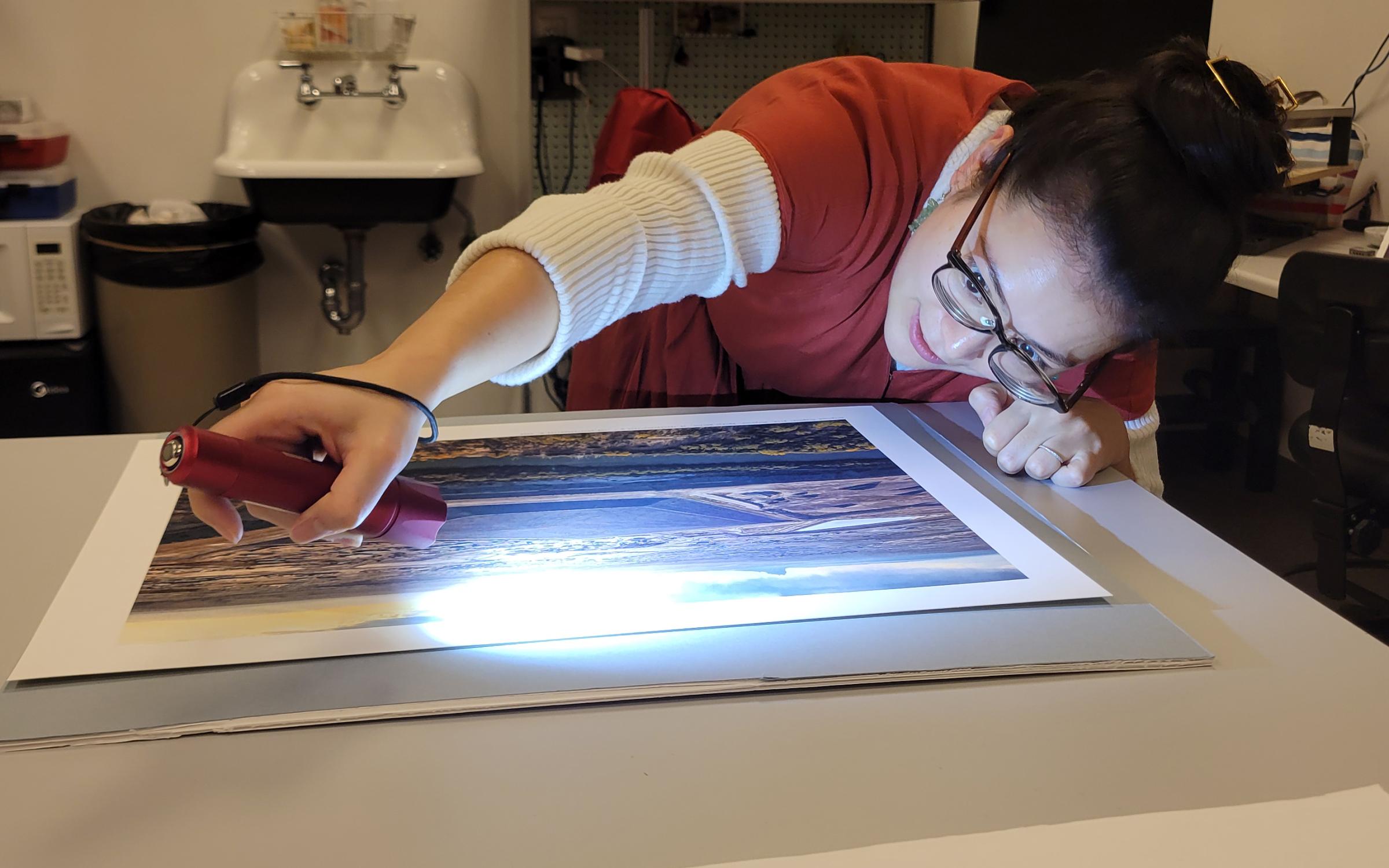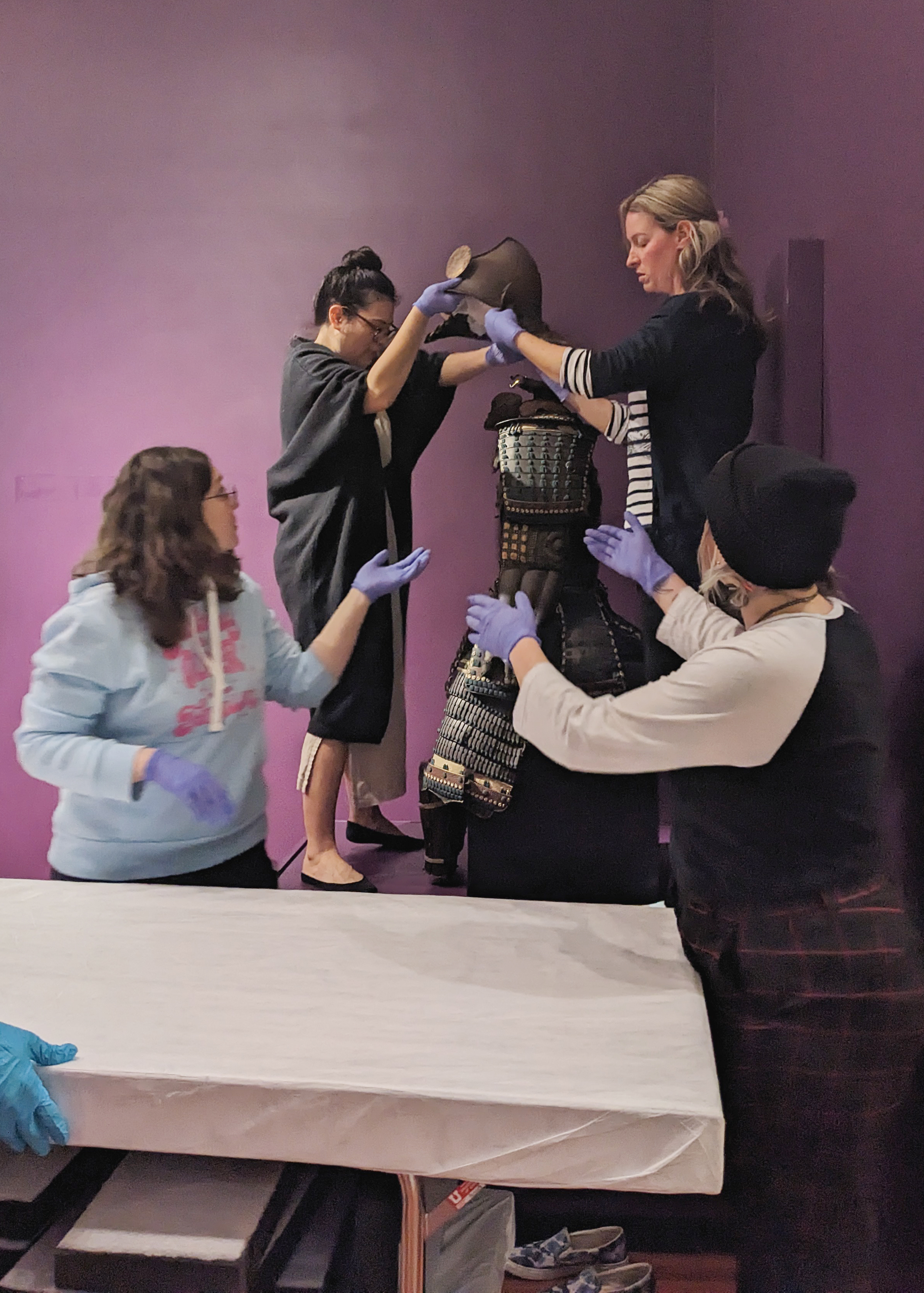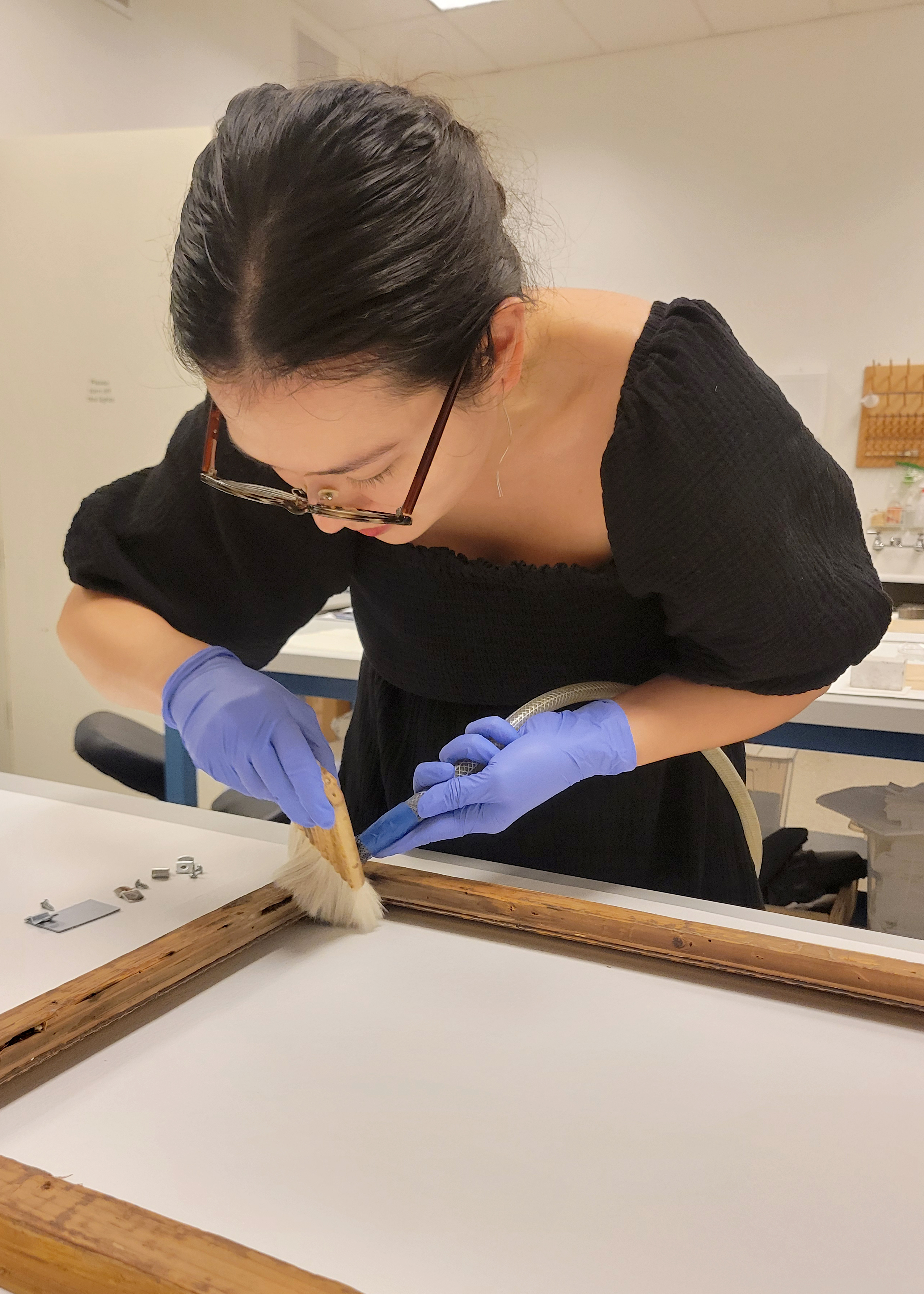
By Melanie Espinal and J. Attridge
Less than three percent of the UMFA’s permanent collection is on display at a given time, so to ensure the public has access to more works, we commit to frequent rotations in our permanent galleries throughout the year. But that is not the only reason to rotate art: If you’ve ever left something outside for a few months and returned to find it had faded in the sun, then you know the damaging effects that light can have over time. Museum conservators keep careful track of how long objects are exposed to light. Light-sensitive works will rotate frequently to rest and promote long-term preservation for generations to come.

Rotating even a single item takes cooperative effort and months of planning from numerous departments, including design, learning and engagement, curatorial, and collections. As the installation nears, the UMFA collections team will oversee conservation treatment, mounting, and installation of the work, as well as preparing the gallery space with painting, patching, measuring, and lighting. Deinstalled art will return deep into the heart of the Museum where it will rest in secure, climate-controlled darkness until it is called upon again. Preserving the permanent collection also allows for a robust regional, national, and global lending program. Art museums and their collections must be kept at a temperature between 60 and 70°F (15.5 and 21°C) and relative humidity between 40 and 60%. This ensures art is fit to be shared with other museums, increasing access for all. These environmental settings also happen to be very good for your skin so the more time you spend in the museum the more your skin will glow!

Collection rotations are hidden but important work. They protect works for future generations and provide a rich canvas for curators to tell fresh stories with compelling new contexts by adding or changing which objects are on view. We may miss an artwork that has gone off of view, but we can take comfort in knowing that it is being preserved to be enjoyed again by not only us but by generations after us as well. Remember, when something is deinstalled, something is installed in its place, and if you visit frequently, you will discover new and captivating gems throughout the galleries. Happy treasure hunting!
